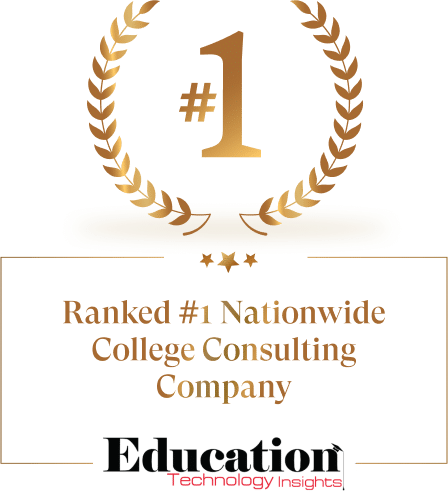College Admissions and Acceptance Rates: Comprehensive Statistics and Insights at Zenith Prep Academy
Explore detailed college acceptance rates, admission statistics, and variations for top universities like Harvard, MIT, and Stanford. Zenith Prep Academy provides expert guidance to help improve your chances in the competitive college admissions process.
There are a variety of key metrics to consider when trying to assess how competitive a college is and what your chances might be. The college admissions process involves various factors that impact admissions decisions. Colleges will consider variables that you can control, such as GPA, test scores, and your level of extracurricular achievement.
They will also consider some variables that you have less control over like the relative strength of your profile in comparison with other students in your school and geographic region. Even the major that you select can have an impact on your chances: for example, students who are applying to major in Computer Science will almost always have a harder time getting in than students who are applying for Slavic Languages (but you can’t just say you want to apply for Slavic Languages if your profile doesn’t sincerely match that interest).
Admissions rates and average test scores are good overall statistics, but in order to really understand your individualized admissions chances you’ll need some expert guidance. That’s where Zenith Prep’s college counselors can help you figure out how your profile will actually be read by college admissions officers. We have a staff of former admissions officers on our team from colleges like Yale, New York University, Columbia, UC Berkely, and Stanford.
Jump to the school you’re interested in
Princeton University
Massachusetts Institute of Technology
Harvard University
Stanford University
Yale University
University of Pennsylvania
California Institute of Technology
Duke University
Brown University
Johns Hopkins University
Northwestern University
Columbia University
Cornell University
University of Chicago
University of California, Berkeley
University of California, Los Angeles
Rice University
Dartmouth College
Vanderbilt University
University of Notre Dame
University of Michigan, Ann Arbor
Georgetown University
University of North Carolina at Chapel Hill
Carnegie Mellon University
Emory University
Top 25 Schools in College Admissions
To get you started thinking about college acceptance rates, here are some baseline statistics for the top 25 colleges (as ranked by US News and World Report). Note that there are students who sometimes get in with slightly lower test scores and GPAs if there are other factors that make their profile appealing, such as an unusually strong set of extracurriculars, insightful essays that showcase the student’s voice, or a level of achievement that is unusual in the student’s geographic area.
1. Princeton University
- Acceptance rate: 6%
- Recommended Unweighted GPA: more than 3.85
- Recommended SAT: 1550 or greater
- Recommended ACT: 35 or greater
2. Massachusetts Institute of Technology (MIT)
- Acceptance rate: 4%
- Recommended Unweighted GPA: more than 3.85
- Recommended SAT: 1550 or greater
- Recommended ACT: 35 or greater
3. Harvard University
- Acceptance rate: 3%
- Recommended Unweighted GPA: more than 3.85
- Recommended SAT: 1550 or greater
- Recommended ACT: 35 or greater
4. Stanford University
- Acceptance rate: 4%
- Recommended Unweighted GPA: more than 3.85
- Recommended SAT: 1550 or greater
- Recommended ACT: 35 or greater
5. Yale University
- Acceptance rate: 5%
- Recommended Unweighted GPA: more than 3.85
- Recommended SAT: 1550 or greater
- Recommended ACT: 35 or greater
6. University of Pennsylvania
- Acceptance rate: 7%
- Recommended Unweighted GPA: 3.80 or greater
- Recommended SAT: 1550 or greater
- Recommended ACT: 34 or greater
7. California Institute of Technology (CalTech)
- Acceptance rate: 3%
- Recommended Unweighted GPA: more than 3.85
- Recommended SAT: 1550 or greater
- Recommended ACT: 35 or greater
8. Duke University
- Acceptance rate: 6%
- Recommended Unweighted GPA: 3.80 or greater
- Recommended SAT: 1520 or greater
- Recommended ACT: 34 or greater
9. Brown University
- Acceptance rate: 5%
- Recommended Unweighted GPA: more than 3.85
- Recommended SAT: 1550 or greater
- Recommended ACT: 35 or greater
10. Johns Hopkins University
- Acceptance rate: 7%
- Recommended Unweighted GPA: 3.80 or greater
- Recommended SAT: 1520 or greater
- Recommended ACT: 34 or greater
11. Northwestern University
- Acceptance rate: 7%
- Recommended Unweighted GPA: 3.80 or greater
- Recommended SAT: 1520 or greater
- Recommended ACT: 34 or greater
12. Columbia University
- Acceptance rate: 4%
- Recommended Unweighted GPA: more than 3.85
- Recommended SAT: 1550 or greater
- Recommended ACT: 35 or greater
13. Cornell University
- Acceptance rate: 7%
- Recommended Unweighted GPA: 3.80 or greater
- Recommended SAT: 1520 or greater
- Recommended ACT: 34 or greater
14. University of Chicago
- Acceptance rate: 5%
- Recommended Unweighted GPA: more than 3.85
- Recommended SAT: 1550 or greater
- Recommended ACT: 35 or greater
15. University of California, Berkeley
- Acceptance rate: 11%
- Recommended Unweighted GPA: 3.80 or greater
- Recommended SAT: UC Berkeley does not currently use standardized tests as part of its admissions process.
- Recommended ACT: UC Berkeley does not currently use standardized tests as part of its admissions process.
16. University of California, Los Angeles
- Acceptance rate: 9%
- Recommended Unweighted GPA: 3.80 or greater
- Recommended SAT: UCLA does not currently use standardized tests as part of its admissions process.
- Recommended ACT: UCLA does not currently use standardized tests as part of its admissions process.
17. Rice University
- Acceptance rate: 9%
- Recommended Unweighted GPA: 3.80 or greater
- Recommended SAT: 1520 or greater
- Recommended ACT: 34 or greater
18. Dartmouth College
- Acceptance rate: 6%
- Recommended Unweighted GPA: 3.80 or greater
- Recommended SAT: 1520 or greater
- Recommended ACT: 34 or greater
19. Vanderbilt University
- Acceptance rate: 7%
- Recommended Unweighted GPA: 3.80 or greater
- Recommended SAT: 1520 or greater
- Recommended ACT: 34 or greater
20. University of Notre Dame
- Acceptance rate: 13%
- Recommended Unweighted GPA: 3.75 or greater
- Recommended SAT: 1500 or greater
- Recommended ACT: 33 or greater
21. University of Michigan, Ann Arbor
- Acceptance rate: 18%
- Recommended Unweighted GPA: 3.75 or greater
- Recommended SAT: 1500 or greater
- Recommended ACT: 33 or greater
22. Georgetown University
- Acceptance rate: 12%
- Recommended Unweighted GPA: 3.75 or greater
- Recommended SAT: 1500 or greater
- Recommended ACT: 33 or greater
23. University of North Carolina at Chapel Hill
- Acceptance rate: 17%
- Recommended Unweighted GPA: 3.75 or greater
- Recommended SAT: 1500 or greater
- Recommended ACT: 33 or greater
24. Carnegie Mellon University
- Acceptance rate: 11%
- Recommended Unweighted GPA: 3.80 or greater
- Recommended SAT: 1500 or greater
- Recommended ACT: 33 or greater
25. Emory University
- Acceptance rate: 11%
- Recommended Unweighted GPA: 3.80 or greater
- Recommended SAT: 1500 or greater
- Recommended ACT: 34 or greater

Find Your Path to Better Education at Zenith Prep Academy
The Top 25 universities are highly competitive. If you want your best chance of getting in, college admissions prep services are essential. At Zenith Prep Academy, it is never too early to start preparing for the future you want. Learn more about Ivy League admission statistics and how you can meet their selective criteria by enrolling in our preparatory courses today.
Decoding College Acceptance Rates: A Comprehensive Guide
College acceptance rates show how hard it is to get into different schools. Schools like Amherst College, Williams College, Northeastern University, and Swarthmore College, as well as famous universities like Harvard University, Stanford University, and the Massachusetts Institute of Technology, publish their admission rates. These rates tell you the percentage of students accepted out of all the applicants.
Knowing college acceptance rates helps students see which colleges are more selective. For example, Princeton University and Caltech have very low acceptance rates, which means they accept only a few of the students who apply. On the other hand, schools like the University of Michigan or UC Berkeley usually have higher acceptance percentages.
When you look at college rankings or decide where to apply, knowing the trends in acceptance rates is helpful. This guide explains important terms like student acceptance rates, admission rates, and acceptance statistics. It also shows how these numbers can affect your chances when applying to college.
If you want to understand how college acceptance rates work and what factors change them, keep reading. This guide provides research and data analysis to help you with your college search.
Understanding College Acceptance Rate Calculations
College acceptance rates are found by dividing the number of accepted students by the total applications a school receives. For example, if a college gets 10,000 applications and admits 1,000 students, the acceptance rate is 10%.
This calculation is simple, but you also need to look at other information, such as:
- Application Numbers: How many people applied.
- Admitted Students: How many were accepted.
- Enrollment or Yield Rates: The percent of admitted students who actually enroll.
Yield rates can change how colleges report acceptance statistics because some schools admit more students than needed, expecting that some will not enroll.
Acceptance rates in higher education differ based on the school’s selectivity and goals. Knowing how acceptance rates are calculated helps students understand college data and make better choices about where to apply.
Key Factors Influencing College Acceptance Rates
Many things affect selective colleges’ acceptance rates. Important factors include:
- Application Volume: More applicants often lead to lower acceptance rates. nique Strengths & Experiences: Students who stand out often have compelling stories, passions, or accomplishments that go beyond grades or test scores. Strategic Course & Activity Choices: Thoughtfully selected classes, extracurriculars, and summer programs can show depth, commitment, and growth over time. Academic Performance (GPA): While good grades support a strong application, how students challenge themselves and show improvement can be just as important. Standardized Test Scores (if submitted): Higher scores can help, but they are just one piece of a much bigger puzzle—and not required at all schools.
- Extracurricular Activities: Unique activities help applicants stand out.
- Legacy Status: Some colleges give preference to relatives of alumni.
- Early Decision: Applying early may increase acceptance chances.
- Diversity Initiatives: Colleges try to admit diverse groups of students.
- Institutional Priorities: Schools want students who fit their goals and culture.
Admissions officers also look at essays, interviews, and recommendation letters to get a full picture of each applicant. These elements are key in demonstrating a student’s commitment to their passion and how that passion will translate to professional success. Knowing these factors can help students prepare stronger applications and understand the competitive admissions process.
Acceptance Rate vs. Yield Rate: What’s the Difference?
The acceptance rate shows the percent of applicants a college accepts. The yield rate shows how many of those accepted students actually enroll.
For instance, if a college admits 5,000 students but only 3,000 enroll, the yield rate is 60%.
This difference is important because colleges use yield rates to guess how many students will attend. Higher yield rates often mean students really want to go to that school.
Understanding both rates helps applicants learn about college admissions and how tough it is to get in. It also helps students plan better for their college applications.
Have questions about college acceptance rates or want to share your experience? Leave a comment below! For advice on improving your college applications, visit our College Application Tips page at Zenith Prep Academy.
References
- National Center for Education Statistics. (2023). College Admission Rates.
- Common Data Set Initiative. (2023). Understanding College Admission Metrics.
- U.S. News & World Report. (2023). College Rankings and Acceptance Rates.
These sources provide reliable data for the information shared in this guide.
Navigating Selective Colleges: Beyond the Numbers
When applying to selective colleges like Amherst College, Williams College, Swarthmore College, Brown University, Pomona College, Dartmouth College, Duke University, Massachusetts Institute of Technology (MIT), Harvard University, Yale University, Johns Hopkins University, University of Chicago, Vanderbilt University, Northwestern University, Columbia University, Stanford University, Cornell University, Rice University, University of Michigan, and UC Berkeley, it is important to look beyond just college acceptance rates.
College acceptance rates and admission statistics show how hard it is to get into these schools. But looking only at these numbers does not give the full picture. College rankings and acceptance percentages catch attention, but the college application process includes many parts. Test scores, grades, extracurricular activities, essays, and interviews all affect admissions decisions. Selectivity is different at each school, so understanding this helps set realistic goals during your college prep.
For students aiming for Ivy League and other highly selective colleges, expert advice and tips can help a lot. Knowing about early decision options and holistic admissions can improve planning and increase chances of getting accepted. In the end, getting into college takes both data and knowing what each school wants.
Strategies to Improve Your Chances at Selective Colleges
To improve your chances at selective colleges, focus on making every part of your college application strong. Here are some helpful strategies:
- Focus on Good Grades and Test Scores: Top colleges care about high grades and strong standardized test scores.
- Take Part in Extracurricular Activities: Being involved in passion-focused activities outside class shows leadership and commitment.
- Write a Strong Essay: A good essay helps you stand out by sharing your unique story, values, and demonstrated interest in a particular field.
- Prepare for Interviews: Interviews let you show your personality and how you fit with the college.
- Use Early Decision if It Fits: Applying early decision can increase acceptance chances because it shows strong interest.
- Get Good Recommendations: Letters from field-related teachers and professional mentors help show your character and skills.
- Work with Admissions Experts: Counselors or consultants can help with test prep, application plans, and improving your materials.
Zenith Prep Academy offers admissions counseling focused on selective colleges to help you create a competitive application complete with both offense and defense heavy elements in order to submit the best possible application.
The Limitations of Focusing Solely on Acceptance Rates
Looking at college acceptance rate trends and admission rates can help, but there are limits. Here is why:
- Acceptance Rates Don’t Show Everything: A low acceptance rate does not mean the college is the right fit or that you will succeed there.
- Admissions Statistics Can Be Misleading: The number of applications and test scores affect acceptance percentages, but do not show campus culture or support.
- Look at Yield Rate: This is the percent of admitted students who choose to enroll. It shows how attractive the college is.
- Waitlist and Enrollment Can Change Things: Some students get in from waitlists, and some decide not to attend even after acceptance. This affects the final class.
- Reputation Isn’t Everything: Higher rankings add prestige, but student success depends on how well a student fits the campus and its resources.
Having realistic goals based on more than just selectivity and college acceptance percentages helps students plan better for college.
Alternative Metrics for Choosing the Right College
When picking a college, it helps to look at other measures besides admission rates to find the best fit:
- Yield Rate and Graduation Rate: These show student satisfaction and success.
- Student Success Rates: Check data on retention and life after graduation.
- Campus Culture and Diversity: A welcoming and varied environment helps students grow.
- Majors and Interdisciplinary Programs: Pick schools with strong programs in your area of interest.
- Financial Aid Options: Look for scholarships and aid that meet your needs.
- Alumni Network and Support Services: Strong alumni ties and student help improve your experience.
- College Rankings and Reputation: Use these as one factor but consider other quality signs.
- Liberal Arts Colleges vs. Research Universities: Choose the type of school that fits your learning style and goals.
Thinking about these factors, along with college acceptance percentages and admissions rates, helps you make a balanced choice for long-term success.
Do you have questions about applying to selective colleges? Share your thoughts or ask our experts in the comments below. For personal advice and prep help, Zenith Prep Academy is ready to guide you through every step of the admissions process.
Strategic Use of Acceptance Rates in Your College Search
Understanding acceptance rates is very important when you plan your college search. College acceptance rates show the percentage of students who get admitted out of all who apply. These rates differ a lot between schools, showing how selective each school is. For example, Harvard University, Stanford University, and the Massachusetts Institute of Technology (MIT) have some of the lowest college acceptance statistics because many students apply but few get in. On the other hand, schools like Northeastern University or the University of Michigan have higher admission rates, giving more chances to students.
Knowing these college application acceptance rates helps you compare different universities, including both public and private ones. This information helps you make better choices based on real college data instead of guesses. When looking at student acceptance rates, things like popular programs, campus size, and reputation cause acceptance rate variations.
Using university acceptance rates the right way helps you find schools where your chances are better or lower. It is not only about applying to the most selective schools but about making a list that matches your goals and what is realistic. Knowing these numbers also helps you plan your college applications better and improve your chances of getting accepted.
Acceptance Rate Variations: Public vs. Private, Liberal Arts vs. Research
Acceptance rates change a lot between different types of schools. Public universities generally have higher admission rates than very selective private universities. For example, the University of California – Los Angeles (UCLA), a public research university, usually has different college acceptance percentages than private schools like Swarthmore College or Williams College.
There are also differences between liberal arts colleges and research universities. Liberal arts colleges such as Amherst College, Colby College, and Brown University focus on broad education with smaller classes. Their college acceptance rates variations show their commitment to maintaining close student communities and personalized teaching.
On the other hand, research universities like the California Institute of Technology (Caltech), Johns Hopkins University, and Massachusetts Institute of Technology (MIT) tend to have lower higher education acceptance rates because of strong reputations and tough programs.
Other reasons for these differences include selectivity, required courses, and changes in enrollment numbers. Knowing these facts helps you choose the type of school that fits your goals and needs best.
If you have questions about using acceptance rates in your college search or want advice that fits your goals, leave a comment below. At Zenith Prep Academy, we are ready to help you every step of the way.
Finding the Right Fit: Acceptance Rates and Personal Goals
When you pick a college, it’s good to know the acceptance rates, but that’s not the only thing to think about. College acceptance rates, also called admission rates or student acceptance rates, show what percentage of applicants get accepted. These rates can be very different at schools like Harvard University, Stanford University, MIT, Yale University, Princeton University, and others.
Acceptance rates help you understand how hard it is to get into a school. For example, colleges like the Massachusetts Institute of Technology (MIT), Columbia University, Duke University, the University of Chicago, the University of Pennsylvania, Northwestern University, Vanderbilt University, and Brown University usually have low college acceptance percentages. That means they admit fewer students because they are more selective. Still, the best college for you depends on how these rates match your personal goals, interests, career plans, and what you want in a “fit.”
Choosing a college that fits your values and future plans can help you succeed over time. Don’t just look at how famous the school is or its admission rates. Think about whether the school’s environment supports how you learn, if it offers programs that match your career goals, and if it matches your interests. This way, you can have a better college experience and do well after you finish school.
The Importance of Acceptance Rates in Relation to Your Goals
College acceptance rates can give you a good idea of your chances of getting in. Knowing college acceptance statistics, admission rates, and college acceptance percentage helps you set real expectations.
Top schools like Harvard University, Yale University, Stanford University, Princeton University, Duke University, Brown University, and the University of Pennsylvania have very competitive college admissions rates. High acceptance rates might seem easier, but lower rates show more competition. Still, that doesn’t mean the hardest schools are always the best fit for everyone.
When looking at acceptance rates, think about your education goals and long-term plans. Does the school’s reputation, course choices, and campus life match what matters most to you? Are you applying only because of the school’s rank, or because you want an education that fits your needs?
Remember, acceptance rates are just one part of your choice. Balancing your chances to get in with your personal goals and school fit will help you be happier and do better in college.
Factors Beyond Acceptance Rates to Consider When Choosing a College
Changes in acceptance rates do not tell you everything about a school. When you look at college data and campus acceptance rates, also consider:
- Campus Life: What is the social scene like? Are there extracurricular clubs and events you like?
- Financial Aid: Does the school offer scholarships or help to lower costs?
- Curriculum & Academic Programs: Can you study the majors or subjects you want?
- Extracurriculars: Are there ways to grow outside of class?
- Location: Is the school in a city or a small town? Does this suit you?
- Faculty & Reputation: Do teachers help students? Is the school known for good academics?
- Size & Diversity: Would you prefer a small liberal arts college like Amherst College, Williams College, Swarthmore College, Colby College, or Pomona College? Or a bigger university with many kinds of students?
- Housing: Is there on-campus housing? Is it comfortable? Will you need to live off-campus and commute? Does this suit you?
- Student Support: Are there services like tutoring and career help? Will you have multiple academic advisors available to guide and mentor you?
- Internship Opportunities & Network: Can the college connect you to jobs and mentors?
Schools such as Caltech, Northeastern University, and Minerva University offer different experiences even though their acceptance rates vary. Looking past just the numbers helps you find the best match for your education.
Determining if a Low Acceptance Rate College is the Right Fit for You
Low acceptance rate colleges like MIT, Harvard University, Yale University, Stanford University, Princeton University, Caltech, Columbia University, and Duke University get many applications each year. These schools accept fewer than 10% of applicants, showing how selective they are.
Before you apply, think about whether a selective college is right for you based on your readiness and strengths. Ask yourself:
- Stress and Academic Pressure: These schools can be tough. Are you ready for that challenge?
- Realistic Goals: Does your academic record and activities match what the school expects?
- Campus Culture & Student Well-being: Will you feel okay socially and emotionally at a school like this?
- Benefits and Drawbacks: These colleges have great resources and networks, but also have heavier workloads and can cost more. Are you able to handle both?
Pick a selective college because it fits you, not just because it is famous. If you plan well and know yourself, you can improve your chances of getting in and find a school that supports your learning and happiness.
Have questions about college acceptance rates or need help finding the right fit for your goals? Share your thoughts or contact Zenith Prep Academy for advice on college admissions.
For more details about choosing a college, see our guide on How to Choose the Best College for You and check trusted sources like the National Center for Education Statistics (nces.ed.gov) and U.S. News & World Report (usnews.com).
Zenith Prep Academy: Your Partner in College Success
Choosing the right college and making a strong application can be hard. Zenith Prep Academy helps you every step of the way in the college application process. Whether you want to go to Amherst College, Williams College, or top schools like Harvard University, Stanford University, or California Institute of Technology, our expert counselors give you clear advice to improve your chances.
We focus on important factors like college acceptance rates, college enrollment rates, and admissions rates. We help you learn about college acceptance statistics for places like Brown University, Northeastern University, and the University of California – Los Angeles. Our programs include test prep, essay help, interview coaching, and planning your course schedule—all designed to raise your college success rates.
We offer special support for competitive colleges like the Massachusetts Institute of Technology, Yale University, and Princeton University. Zenith Prep Academy makes sure you have the best tools to stand out. Join our expert webinars to get tips on how to succeed in college applications.
How Zenith Prep Academy Improves Your College Application Chances
At Zenith Prep Academy, we know college acceptance rates and trends matter to students. We use this information to make plans just for you. Our expert counselors provide advice on how to do well on standardized tests, help you write strong essays, and prepare for interviews—key parts that affect college application acceptance rates.
Our services include:
- One-on-one counseling to find your strengths and goals.
- Test prep methods to increase your test scores.
- Advice on writing clear and strong essays and personal statements.
- Interview practice with skilled coaches.
By focusing on these parts, we help you during the admissions process at elite universities like Columbia University, Duke University, and Dartmouth College, improving your college success rates.
Key Components of a Strong College Application
A good college application has many important parts. Knowing these will help you get better college acceptance rates and chances at schools like Pomona College, Minerva University, and Vanderbilt University.
The key parts of a strong application are:
- Test Scores: Good scores from standardized tests are still needed by many schools.
- Essays and Personal Statements: These show who you are, your achievements, and leadership skills.
- Curriculum: Advanced level courses show you are ready for college work.
- Recommendation Letters: Strong letters from teachers or mentors support your application.
- Interview: Doing well in interviews can help you stand out in the college admissions process.
Knowing how acceptance rates change and looking at college rankings helps you create a strong application. Our expert advice and help services make sure every part of your application is strong and competitive.
Preparing for the College Application Process for Increased Success
Starting early and staying organized helps your college application succeed. Zenith Prep Academy guides you in test prep, essay writing, and interview practice with expert counseling and personal support.
Key steps to follow:
- Start Early: Use a college application checklist to meet all deadlines.
- Test Preparation: Use effective study tips to get better test scores.
- Essay Writing: Write clear and strong essays with expert feedback.
- Interview Practice: Build confidence with mock interviews and coaching.
- Manage Timelines: Know early decision dates and regular deadlines.
- Join Webinars and Workshops: Learn the latest admissions tips and news.
Following these steps raises your college success rates and matches college acceptance trends at schools like Johns Hopkins University, Rice University, and the University of Michigan. Our personal support helps you make smart choices through high school and college applications.
Have questions about improving your college application? Comment below or join our next Admissionsight webinar to learn more about getting into your dream college. For more help, check out our college admissions tips and test prep guides.
Sources:
- National Center for Education Statistics: https://nces.ed.gov
- Common Data Set Initiative: http://commondata.org
- College Board: https://www.collegeboard.org
What factors influence college admission percentages and acceptance ratios at top universities?
College admission percentages depend on the number of applications, how selective the school is, and how many spots are open. Schools like Dartmouth College or Brown University usually have lower acceptance rates because many students apply, and the rules are strict. Colleges also look at your test scores, GPA, activities, and essays when making decisions.
How can understanding waitlist policies improve my chances of enrollment?
If you are on a waitlist, you might still get admitted if others say no. Look up each school’s waitlist rules, like at Northeastern or Boston College. Keep in touch with the admissions office and show you are interested by sending updates or asking for interviews to improve your chances.
What role do financial aid and loan options play during the admission process?
Many colleges offer help with money through scholarships, grants, and loans. Knowing about these options can help you decide which school to choose, especially private or out-of-state ones. It is important to check the financial aid details and ask customer service if you need help with loans or aid.
How does selectivity impact the average college acceptance rates among universities?
Selectivity shows how hard it is to get into a school based on who applies and how many spots there are. Very selective schools like Princeton or Stanford have lower acceptance rates because they have tough rules. Schools that are less selective often accept more students but still keep good education.
What strategies help improve applications for early decision or early action programs?
Applying early decision or early action can give you a better chance because it shows your commitment to attending the school. Make sure your application is clear, has no mistakes, and shares your strengths in leadership and course work. Use guides, surveys, and test prep tools to make your application strong.
How are higher education acceptance rates changing in recent years, and what does this mean for applicants?
Acceptance rates change because more students apply, the population changes, and rules may be different. Ivy League schools have become more competitive recently. Students should read newsletters, news, and reports to know what is happening and plan their applications well.
What resources are available for international students applying to U.S. colleges?
International students can get help with advice, language support, and visa steps. Many schools have websites with all the rules for admission, financial aid, and programs to help students fit in. Using these resources makes applying easier for international students.
How can technology and tools enhance the college application experience?
Tools like application calculators, online essay help, and live Q&A sessions make applying easier. Programs like Gmail and Loom help you talk with school staff or mentors. Keeping track with bookmarks and email accounts helps you send applications on time and follow up fast.





